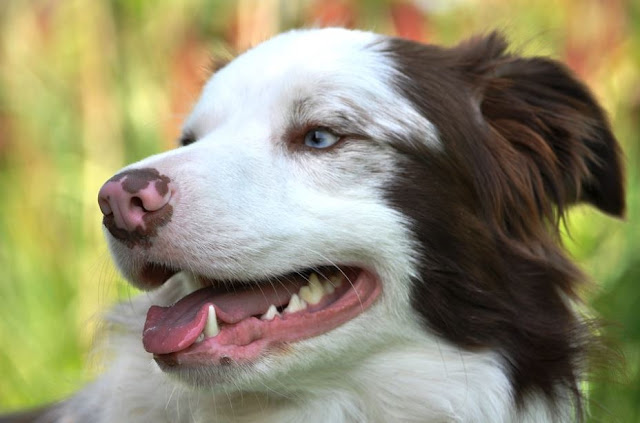Why do dogs show their teeth?
 |
Why do dogs do |
You may have seen a dog show its teeth at one point or another. You might think that means "stay away" and you might be right. But what does that really mean when a dog shows his teeth? Do some dogs smile? If the dog shows its teeth, is it aggression or is it smiling?
When a dog shows his teeth, he uses body language to communicate. It is important to have some understanding of your dog's body language so that you can understand what your dog is trying to tell you.
When dogs show teeth.
In dogs, the term "exposed teeth" simply means a dog is displaying its teeth. As the dog shows its teeth by curling its lips to reveal its teeth. It is a behavior that occurs in response to certain situations. Where exposed teeth in dogs are often a warning.
What does it mean when dogs uncover their teeth?
In most cases, when a dog exposes its teeth, it sends you a clear message to hold back. Think of the teeth as a kind of warning: "I'll use these teeth if you don't stop and walk away from here." This behavior may be a precursor to more serious aggression. This type of dog body language is often accompanied by some sounds, such as growling and snarling. Why do dogs show their teeth?
You may also notice that your dog's body language indicates that the dog is becoming aggressive, such as erect ears, stiff posture, and a high tail, and moving back and forth quickly. If this warning from the dog is ignored, this behavior may develop into biting.
Dogs display aggression for several reasons, such as guarding resources, ownership, dominance, and fear. Regardless of the reason the dog is aggressive, exposed teeth are usually a sign that your dog is feeling insecure and comfortable. If you see a dog with this type of body language, it is best to leave that dog alone. Avoid looking into the dog's eyes and carefully move away from the dog.
Sometimes, the dog will expose his teeth without any aggressive tendencies behind it. This is called an obedient smile or a submissive smile. It is usually accompanied by non-threatening body languages such as lip licking, an avowed gaze, a relaxed body posture, and ears sitting on the head.
An obedient smile is a form of appeasement aimed at calming a situation. When a dog is actually showing a smile, this behavior should not develop into aggression. However, if your dog smiles due to stress or fear, he may eventually feel threatened enough to become aggressive and defensive. But not all dogs exhibit submissive or obedient smiles
What to do if the dog reveals his teeth?
If your dog is showing his teeth to you or another person, you should pay attention to the dog's body language. If your dog is showing his teeth in a way that appears to be aggressive, you should remove yourself / or your dog from this situation.
Then, seek the help of a professional dog trainer or behavioral specialist to help manage or stop the problem. It is important to act quickly before your dog bites someone.
If you are unsure whether your dog is revealing his teeth, an obedient or aggressive smile, your best solution is to contact a professional dog trainer.
These experts are specially trained to learn accurate signs and signals related to dogs' body language and behavior. It's always a good idea to put safety first.
If you are sure that your dog is smiling simply and that his body language appears calm and submissive, then you should not be anxious.
However, you must monitor your dog and determine if he is feeling uncomfortable or stressed in his current position.
You should also monitor and follow the dog's body language to make sure not to misread this language or signs that may be an indicator that the dog is feeling nervous or anxious about something.
Train dogs to smile
Dogs really smile, as many dog owners can train their dogs to smile when citing them. This is best learned by getting the dog to smile and reward them by praising the dog with a stimulating word such as "smile."
Just be certain that your dog is definitely smiling (and not showing aggression) before you teach your dog to do so by signaling! Also, make sure that you do not inadvertently trigger signs of fear or anxiety in your dog as some dogs will display this smile when they are in a state of stress.



